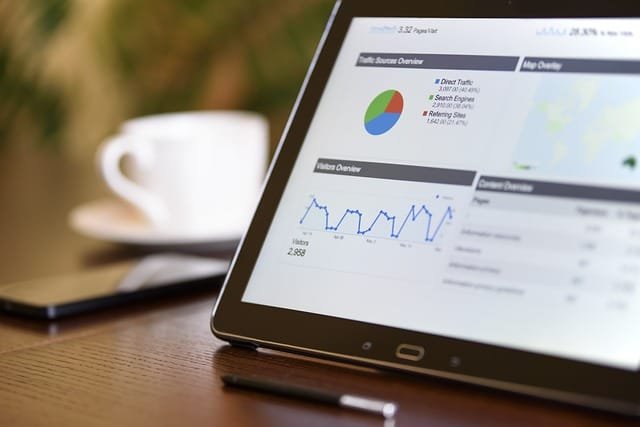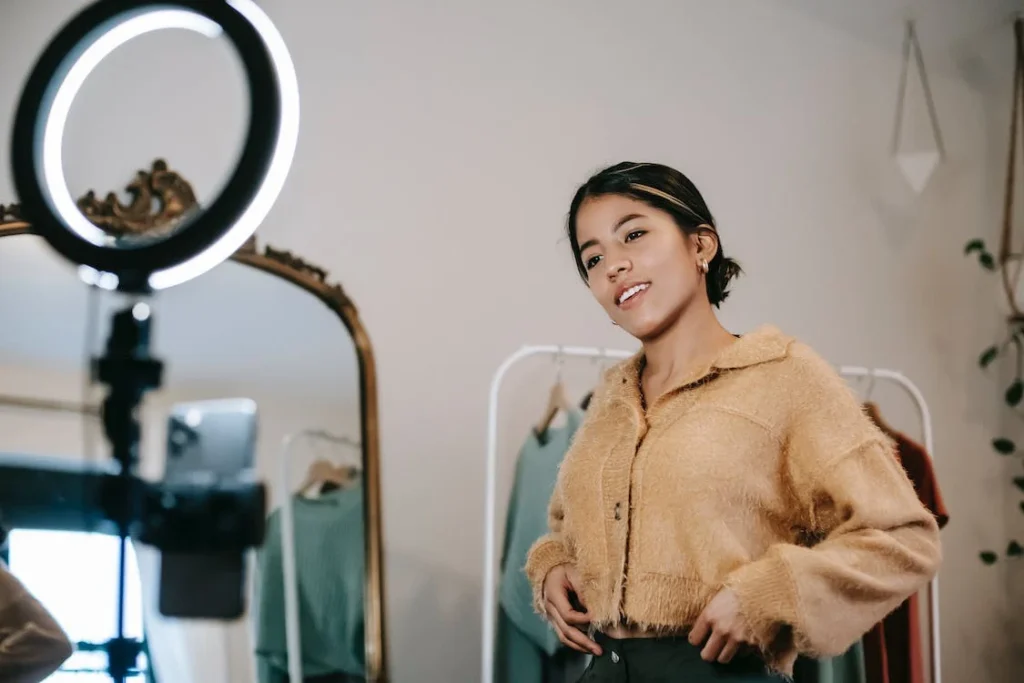This Article has been revised, edited and added to, by Poulomi Chakraborty.
In today’s digital landscape, influencer partnerships have become a powerful strategy for amplifying content reach and enhancing brand credibility. By collaborating with influencers who have established trust and a loyal following, businesses can tap into new audiences and create authentic connections. This approach goes beyond traditional advertising, leveraging the personal touch and relatability of influencers to drive engagement and build trust.
Understanding Influencer Marketing

The Evolution of Influencer Marketing
Influencer marketing has evolved significantly over the past decade. Initially, it was limited to celebrities and well-known public figures who could sway public opinion.
However, with the rise of social media platforms like Instagram, YouTube, and TikTok, the landscape has broadened to include micro-influencers and even nano-influencers. These influencers may not have millions of followers, but their highly engaged audiences value their opinions and recommendations.
This shift has made influencer marketing more accessible and effective for businesses of all sizes. Small businesses and startups, in particular, can benefit from partnering with micro-influencers who have a closer, more personal connection with their followers.
These partnerships can provide a higher return on investment (ROI) compared to traditional advertising methods, as they leverage the trust and authenticity of influencers to create meaningful engagement.
Comparing Traditional Advertising and Influencer Marketing
Traditional advertising, such as TV commercials, print ads, and billboards, often involves a one-way communication where brands push their messages to a broad audience.
This method can be effective in reaching a large number of people, but it lacks the personal touch and relatability that modern consumers crave. Traditional ads are also becoming easier to ignore, as people use ad blockers and fast-forward through commercials.
In contrast, influencer marketing is more of a two-way conversation. Influencers engage with their followers, respond to comments, and share personal stories and experiences.
This creates a sense of community and trust, making their endorsements more credible and impactful. Influencer partnerships allow brands to tap into this trust, reaching audiences in a more organic and authentic way.
For example, consider a skincare brand looking to promote a new product. A traditional ad might show a model using the product, but a partnership with an influencer allows for a more personal and detailed review.
The influencer can share their skincare routine, explain why they like the product, and even demonstrate its use in a video. This kind of content feels more genuine and relatable, making it more likely to resonate with potential customers.
The Power of Social Proof
One of the key benefits of influencer marketing is the power of social proof. Social proof is the psychological phenomenon where people look to others to determine the correct behavior. When people see their favorite influencers using and endorsing a product, they are more likely to trust the brand and consider making a purchase themselves.
Influencers often share user-generated content from their followers, further amplifying the effect of social proof. When followers see their peers using a product, it reinforces the product’s popularity and credibility. This creates a ripple effect, where the reach and impact of the original content are magnified through the network of followers.
Building Authentic Connections
Authenticity is a crucial element of successful influencer marketing. Today’s consumers are savvy and can easily spot inauthentic endorsements. They value transparency and honesty, and they are more likely to trust influencers who are genuine in their recommendations.
To build authentic connections through influencer partnerships, brands should focus on collaborating with influencers who genuinely align with their values and products.
This means looking beyond follower count and considering factors such as the influencer’s niche, engagement rate, and overall reputation. A well-matched partnership can create content that feels natural and resonates deeply with the audience.
For instance, a fitness brand might partner with a health and wellness influencer who is known for their dedication to a healthy lifestyle. The influencer’s followers are likely to be interested in fitness products, making the endorsement more relevant and credible. The influencer can share personal stories and experiences related to the brand, creating a more authentic and engaging narrative.
Measuring Success in Influencer Marketing
Measuring the success of influencer marketing campaigns is essential to understand their impact and ROI. Unlike traditional advertising, which often relies on broad metrics like reach and impressions, influencer marketing offers more granular insights into engagement and conversions.
Key performance indicators (KPIs) for influencer marketing might include engagement rates (likes, comments, shares), website traffic, and sales conversions. Brands can use tracking links and promo codes to attribute sales directly to influencer partnerships, providing clear evidence of their effectiveness.
Additionally, qualitative feedback, such as comments and reviews, can offer valuable insights into how the campaign is resonating with the audience.
Choosing the Right Influencers

Identifying Your Goals
Before diving into influencer partnerships, it’s essential to define your goals clearly. Whether you aim to increase brand awareness, drive sales, or build a loyal community, having a clear objective will guide your influencer selection process.
For instance, if your goal is to boost brand awareness, partnering with influencers who have a large following might be effective. However, if your objective is to drive sales, focusing on influencers with high engagement rates and a niche audience that aligns with your product could yield better results.
Finding Influencers Who Align with Your Brand
One of the most critical steps in influencer marketing is finding influencers who genuinely align with your brand’s values, mission, and products. This alignment ensures that the content created feels natural and authentic, enhancing its credibility and effectiveness.
Look beyond the number of followers and consider the influencer’s engagement rate, the quality of their content, and their relationship with their audience.
Use social media platforms and influencer marketing tools to search for potential partners. Tools like BuzzSumo, AspireIQ, and Traackr can help you find influencers in your niche and provide insights into their performance metrics.
Analyze their content to see if their style and messaging resonate with your brand. Additionally, review their audience demographics to ensure they match your target market.
Micro-Influencers vs. Macro-Influencers
When selecting influencers, you’ll encounter two main types: micro-influencers and macro-influencers. Micro-influencers typically have between 1,000 to 100,000 followers, while macro-influencers have over 100,000 followers. Each type offers distinct advantages depending on your campaign goals.
Micro-influencers often have a more engaged and loyal following. Their audiences see them as more relatable and trustworthy, making their endorsements feel more authentic. This can lead to higher engagement rates and a more significant impact on purchasing decisions.
For example, a startup focusing on sustainable fashion might partner with a micro-influencer known for promoting eco-friendly products, ensuring the message reaches a highly targeted and receptive audience.
Macro-influencers, on the other hand, can provide extensive reach and exposure. Their large followings mean that your brand can quickly gain visibility among a broad audience.
However, macro-influencers typically charge higher fees, and their endorsements may sometimes come across as less personal. For established brands looking to launch a new product or campaign, macro-influencers can create a buzz and generate widespread awareness.
Authenticity Over Popularity
Authenticity is paramount in influencer marketing. Today’s consumers can quickly discern when an influencer’s endorsement feels forced or inauthentic. To ensure genuine and impactful partnerships, prioritize influencers who already use and love your products.
This natural affinity will come through in their content, making their endorsements more credible and persuasive.
Reach out to influencers who have mentioned your brand or similar products organically. This demonstrates that they are genuinely interested in your niche and can speak authentically about your offerings.
For example, if you’re a tech startup launching a new gadget, collaborating with tech enthusiasts who have previously reviewed similar products can add authenticity to your campaign.
Evaluating Influencer Metrics
To select the right influencers, it’s crucial to evaluate their performance metrics. Key metrics include engagement rate, reach, follower growth, and audience demographics. High engagement rates indicate that the influencer’s audience actively interacts with their content, suggesting a strong, loyal following.
Use tools like Social Blade or HypeAuditor to analyze these metrics. Look for consistent engagement patterns and avoid influencers with sudden spikes in followers, as this may indicate fake followers. Assess the quality of their interactions—genuine comments and conversations are more valuable than generic likes or automated responses.
Building Long-Term Relationships
While one-off campaigns can yield immediate results, building long-term relationships with influencers can create sustained benefits. Long-term partnerships allow influencers to become more familiar with your brand, resulting in more authentic and detailed endorsements. These ongoing relationships can help establish trust and loyalty among the influencer’s audience.
Invest time in nurturing these relationships by maintaining regular communication, providing them with exclusive product access, and involving them in your brand’s journey.
For example, invite influencers to company events, product launches, or behind-the-scenes experiences. This deeper engagement can lead to more genuine content and stronger advocacy for your brand.
Crafting Effective Influencer Campaigns

Developing a Strategic Campaign Plan
Creating a successful influencer campaign starts with a strategic plan. Clearly define your campaign objectives, whether it’s increasing brand awareness, driving traffic to your website, or boosting sales. Establish measurable goals and key performance indicators (KPIs) to track your campaign’s success. This could include metrics such as reach, engagement rates, click-through rates, and conversions.
Identify your target audience and determine which platforms they are most active on. Tailor your campaign to these platforms, leveraging their unique features to maximize impact. For example, if your target audience is primarily on Instagram, focus on visually appealing content and utilize Instagram Stories, Reels, and IGTV.
Crafting a Compelling Brief
A well-crafted brief is essential for aligning influencers with your campaign vision. Provide detailed information about your brand, campaign goals, and key messages. Clearly outline the expectations, deliverables, and deadlines. Include guidelines on branding, tone, and style to ensure consistency across all influencer content.
Be open to creative input from influencers, as they know their audience best and can offer valuable insights. Encourage them to infuse their personality and unique voice into the content, making it more authentic and engaging.
For instance, if you’re promoting a new skincare product, allow the influencer to share their personal skincare routine and experiences with the product.
Creating Engaging Content
The success of your influencer campaign hinges on the quality and appeal of the content created. Work closely with influencers to develop content that resonates with their audience while staying true to your brand’s message. This collaboration can result in more authentic and compelling content.
Incorporate various content formats, such as photos, videos, blog posts, and live streams, to keep the campaign dynamic and engaging. Interactive content, such as polls, Q&A sessions, and giveaways, can further boost engagement and create a sense of community.
Leveraging User-Generated Content
User-generated content (UGC) can amplify your influencer campaign by encouraging followers to create and share their own content related to your brand. This not only increases engagement but also provides additional social proof.
Create campaign-specific hashtags and encourage influencers and their followers to use them. Share the best UGC on your brand’s social media channels, giving credit to the creators. This can foster a sense of community and further promote your campaign.
For example, a fitness brand launching a new workout app could partner with fitness influencers to showcase their workouts using the app. Encourage followers to share their workout videos or photos using a branded hashtag, creating a library of UGC that showcases the app’s effectiveness and versatility.
Running Effective Giveaways and Contests
Giveaways and contests are powerful tools for boosting engagement and expanding your reach. Partner with influencers to host these events, offering attractive prizes that resonate with your target audience.
Ensure the entry requirements are simple and aligned with your campaign goals, such as following your brand’s social media accounts, tagging friends, or sharing content.
Promote the giveaway or contest across multiple channels to maximize visibility. Use targeted ads to reach a broader audience and encourage participation. Announce the winners publicly to maintain transparency and build trust with your audience.
Monitoring and Analyzing Campaign Performance
Monitoring and analyzing the performance of your influencer campaign is crucial for understanding its impact and ROI. Use analytics tools to track key metrics such as reach, engagement, click-through rates, and conversions. Compare these metrics against your initial goals and KPIs to evaluate the campaign’s success.
Gather qualitative feedback from influencers and their followers to gain insights into the campaign’s reception. Analyze comments, reviews, and direct messages to identify strengths and areas for improvement. This feedback can inform future campaigns and help refine your influencer marketing strategy.
For instance, if a campaign promoting a new fashion line resulted in high engagement but low conversions, analyze the content and audience interactions to understand why. Perhaps the call-to-action (CTA) wasn’t compelling enough, or the product didn’t resonate with the audience. Use these insights to optimize future campaigns.
Building Long-Term Brand Advocacy
Turning successful influencer partnerships into long-term brand advocacy can yield sustained benefits. Nurture relationships with influencers who have proven to be effective advocates for your brand. Provide them with exclusive access to new products, early insights into upcoming campaigns, and personalized experiences.
Encourage influencers to share their ongoing experiences with your brand, fostering a deeper connection with their audience. This continuous engagement can lead to stronger brand loyalty and increased credibility.
For example, a tech company could invite top influencers to beta test new products, providing them with early access and the opportunity to share their feedback. This not only creates excitement and anticipation but also positions the influencers as trusted experts who have a deeper understanding of the brand.

Building and Managing Relationships with Influencers
Establishing Initial Contact
Building a strong relationship with influencers starts with making a positive first impression. When reaching out to potential partners, personalize your communication to show that you have done your homework. Mention specific content of theirs that you admire and explain why you think they would be a great fit for your brand. Keep your message concise but detailed enough to convey your vision for the partnership.
Email is often the best way to initiate contact, as it allows for a professional and detailed introduction. If an influencer’s contact information is not readily available, use direct messages on social media platforms. However, keep these initial messages short and suggest moving the conversation to email for a more formal discussion.
Negotiating Terms and Agreements
Once an influencer expresses interest, the next step is to negotiate the terms of your partnership. Clearly outline the scope of work, deliverables, timelines, and compensation. Be transparent about your expectations and listen to the influencer’s input. They can provide valuable insights into what will resonate with their audience and how to best structure the campaign.
Create a formal agreement that covers all aspects of the collaboration, including content rights, usage permissions, and confidentiality clauses. This ensures both parties are on the same page and can prevent potential misunderstandings. Having a written contract also protects your brand and the influencer, providing a clear reference if any issues arise.
Providing Support and Resources
Supporting your influencers throughout the campaign is crucial for creating high-quality content and maintaining a positive relationship. Provide them with the necessary resources, such as product samples, detailed brand guidelines, and key messaging points. The more information and tools you provide, the easier it will be for them to create authentic and engaging content.
Be available to answer questions and provide feedback promptly. Establishing an open line of communication helps address any concerns quickly and ensures the campaign runs smoothly. Regular check-ins can also help you stay updated on the progress and make any necessary adjustments.
Encouraging Creative Freedom
While it’s important to provide guidelines, it’s equally important to allow influencers creative freedom. Influencers know their audience best and can create content that resonates deeply with their followers. Trust their creativity and let them incorporate their unique voice and style into the campaign.
Micromanaging can stifle creativity and lead to inauthentic content. Instead, focus on building a collaborative relationship where both parties contribute ideas and feedback. This approach fosters mutual respect and can result in more innovative and effective content.
Recognizing and Rewarding Influencers
Recognizing and rewarding influencers for their efforts can strengthen your relationship and encourage long-term collaboration. Show appreciation for their work by acknowledging their contributions publicly. Share their content on your brand’s social media channels and website, and express gratitude for their partnership.
Consider offering additional incentives, such as exclusive previews of new products, invitations to brand events, or personalized gifts. These gestures demonstrate that you value their partnership and are committed to a long-term relationship.
Handling Conflicts and Issues
No partnership is without challenges, and handling conflicts professionally is essential for maintaining a positive relationship. If issues arise, address them promptly and respectfully. Communicate openly and work together to find a solution that satisfies both parties.
For example, if an influencer fails to meet a deadline, discuss the reasons behind the delay and agree on a new timeline. If the content does not align with your brand guidelines, provide constructive feedback and offer suggestions for improvement. Approaching conflicts with a problem-solving mindset can help maintain trust and collaboration.
Measuring Long-Term Impact
Beyond the immediate metrics of a campaign, measuring the long-term impact of influencer partnerships is crucial. Evaluate how these collaborations have contributed to brand growth, customer loyalty, and overall marketing goals. Analyze trends over time to understand the cumulative effect of multiple campaigns and long-term partnerships.
Use tools like Google Analytics, social media insights, and CRM systems to track the influence of these partnerships on your broader marketing objectives. Look for patterns in website traffic, sales data, and customer engagement that correlate with influencer campaigns. This long-term analysis helps refine your strategy and identify which influencers and types of content drive the most significant results.
Successful Influencer Partnerships

Daniel Wellington: Building a Lifestyle Brand
Daniel Wellington, a watch brand, successfully used influencer marketing to establish itself in a highly competitive market. By partnering with a vast network of influencers across different niches, Daniel Wellington created a recognizable and aspirational brand image. Influencers shared stylish photos featuring their watches, often accompanied by unique discount codes for their followers.
This strategy not only drove direct sales but also built a strong social media presence and brand identity. The use of personalized discount codes allowed Daniel Wellington to track the performance of each influencer and adjust their strategy accordingly. The consistent visual aesthetic and targeted partnerships helped the brand become synonymous with affordable luxury and style.
Glossier: Leveraging Micro-Influencers
Glossier, a beauty brand, has built its success on leveraging micro-influencers and user-generated content. The brand focuses on creating products that resonate with everyday beauty enthusiasts, encouraging them to share their experiences on social media. Glossier often features real customers in its marketing campaigns, highlighting their genuine reviews and testimonials.
By cultivating a community-driven approach, Glossier has created a sense of belonging and trust among its audience. The brand’s strategy of amplifying voices from within its community has resulted in authentic content that resonates deeply with its target market. This approach has allowed Glossier to grow organically and build a loyal customer base.
Red Bull: Extreme Sports and Lifestyle Content
Red Bull has mastered the art of influencer partnerships by aligning itself with extreme sports and adventure lifestyles. The brand collaborates with athletes, adventurers, and content creators who embody its energetic and adventurous spirit. These influencers create high-octane content, from skydiving stunts to mountain biking adventures, that captures the excitement and thrill associated with Red Bull.
By consistently producing engaging and adrenaline-pumping content, Red Bull has established itself as more than just an energy drink company. The brand’s influencer partnerships have helped it become a global symbol of extreme sports and adventure, attracting a passionate and loyal following.
Gymshark: Fitness Influencers and Community Building
Gymshark, a fitness apparel brand, has grown rapidly by partnering with fitness influencers who share workout routines, fitness tips, and motivational content. These influencers create a sense of community and inspire their followers to pursue their fitness goals. Gymshark frequently features these influencers in their marketing campaigns, promoting their apparel in real-world fitness scenarios.
The brand’s focus on building a supportive and motivating community has resonated with fitness enthusiasts worldwide. Gymshark’s influencer partnerships have helped it achieve significant brand awareness and loyalty, turning it into a leading name in the fitness apparel industry.
Future Trends in Influencer Marketing

The Rise of Nano-Influencers
Nano-influencers, who typically have fewer than 10,000 followers, are becoming increasingly valuable for brands. Despite their smaller followings, nano-influencers often have highly engaged and loyal audiences. Their recommendations feel more personal and genuine, making them ideal partners for brands looking to build trust and authenticity.
As the influencer marketing landscape evolves, more brands are likely to turn to nano-influencers for their campaigns. These partnerships can be particularly effective for niche markets and local businesses, where the influencer’s close-knit community can drive significant impact.
Emphasis on Video Content
Video content continues to dominate social media, and its importance in influencer marketing is only growing. Platforms like TikTok, Instagram Reels, and YouTube are driving the demand for short, engaging video content. Brands that embrace video content in their influencer marketing strategies can capture attention and engage audiences more effectively.
Influencers are increasingly using video to share product reviews, tutorials, and behind-the-scenes glimpses into their lives. This dynamic content format allows for more creativity and authenticity, making it a powerful tool for storytelling and brand building.
Data-Driven Influencer Marketing
As influencer marketing matures, the use of data and analytics to inform strategy is becoming more sophisticated. Brands are leveraging advanced analytics tools to measure campaign performance, understand audience demographics, and track ROI. This data-driven approach enables brands to make more informed decisions and optimize their influencer partnerships for better results.
In the future, we can expect to see more brands using AI and machine learning to analyze influencer data and predict campaign outcomes. These technologies can help identify the most effective influencers, content formats, and messaging strategies, driving more efficient and impactful campaigns.
Authenticity and Transparency
Authenticity and transparency will continue to be critical in influencer marketing. Consumers are increasingly skeptical of overtly promotional content and prefer genuine recommendations. Brands and influencers must prioritize transparency, clearly disclosing partnerships and maintaining honesty in their endorsements.
Building long-term relationships based on mutual trust and respect can enhance authenticity. Brands should seek to collaborate with influencers who genuinely love and use their products, resulting in more credible and persuasive content.
Integration of Influencer Marketing with Other Channels
Influencer marketing is no longer a standalone strategy but an integral part of a broader marketing ecosystem. Brands are increasingly integrating influencer campaigns with other marketing channels, such as email marketing, content marketing, and paid advertising. This integrated approach can amplify the reach and impact of influencer content, creating a cohesive and multi-faceted marketing strategy.
For example, influencer-generated content can be repurposed for email newsletters, blog posts, and social media ads. By weaving influencer marketing into the broader marketing mix, brands can create a consistent and compelling brand narrative across all touchpoints.
Conclusion
Influencer partnerships have emerged as a powerful strategy for amplifying content reach and enhancing brand credibility. By collaborating with influencers who align with your brand values and possess a loyal following, you can tap into new audiences and create authentic connections. Crafting effective campaigns involves clear objectives, engaging content, and ongoing relationship management.
As the landscape evolves, emphasizing authenticity, leveraging data, and integrating influencer efforts with broader marketing strategies will be crucial. Staying ahead of trends such as the rise of nano-influencers and the growing importance of video content can further enhance your efforts. By prioritizing trust and authenticity, and using advanced analytics, brands can create impactful influencer partnerships that drive sustained growth and success.
Read Next
- Affiliate Marketing for Local Businesses: Building Loyalty and Earning Commissions
- The Role of User Reviews in Enhancing Your Affiliate Marketing Strategy
- Affiliate Marketing for the Fashion Industry: Tips for Promoting Trendy Products
- Crafting Compelling Content for Your Affiliate Marketing Campaigns
- The Importance of Trust and Transparency in Affiliate Marketing






















Comments are closed.